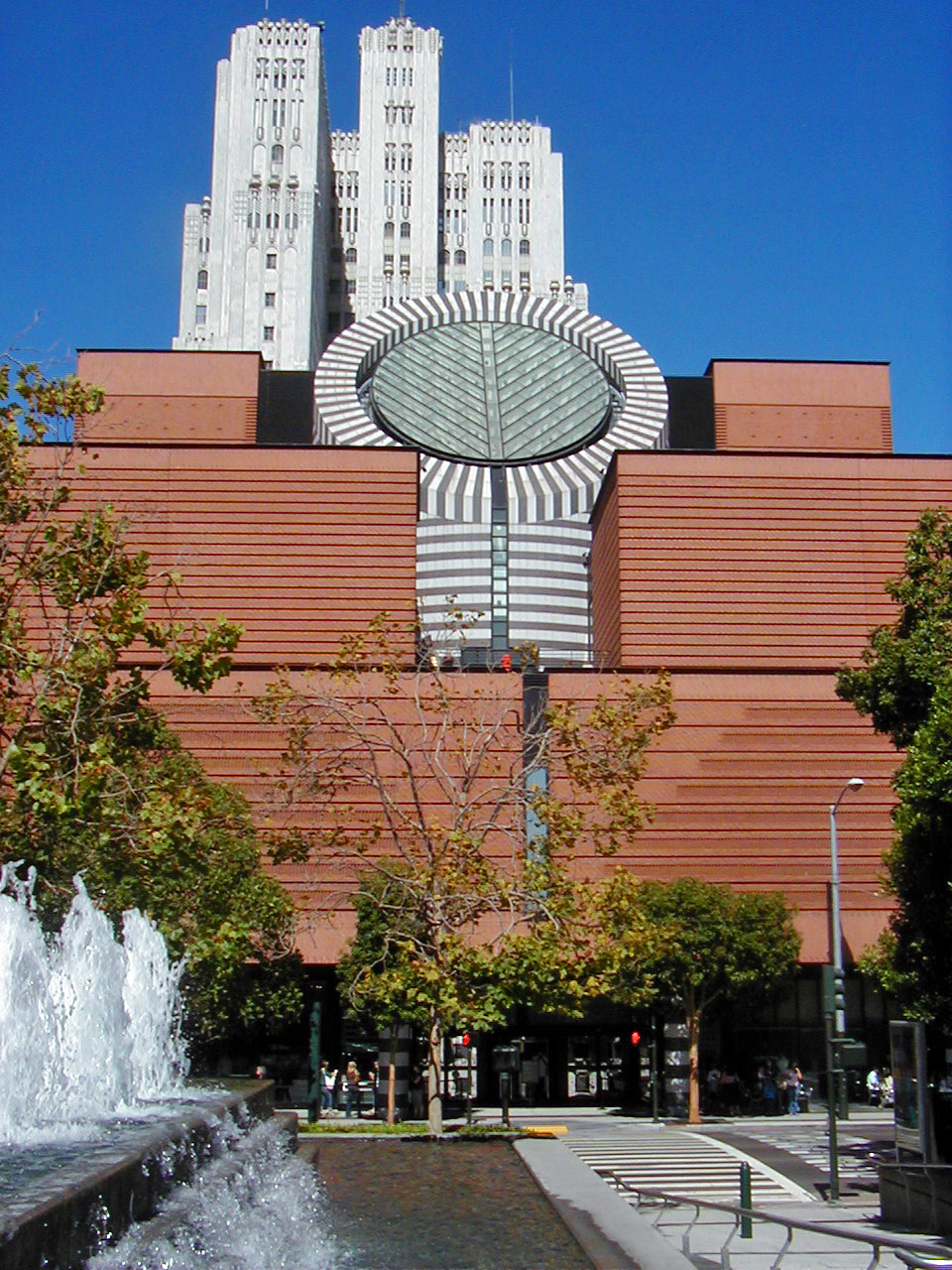
2b, SFMOMA
1.Contains the sources you used with links to these sources .25 points
•http://en.wikipedia.org/wiki/Culture_of_California#Museums
•http://en.wikipedia.org/wiki/San_Francisco_Museum_of_Modern_Art
•http://www.sfmoma.org/pages/about_sfmoma
2. Contains a brief paragraph how it connects to your study of humanities. 1 point
This field trip fulfilled our course requirement and study of humanities by “Participate(ing) in the humanities outside of class by attendance at museums.” We also were able to examine our own values by comparing them with those that differ in our society. Although many wouldn’t like this museum per say, I find the work fascinating.
3. Contains the following "analytical elements":
Observation: What did you choose? What do you see or hear or feel or think of in the choice you made? What is the subject of the work? If you chose a place, be specific in your description of what you see or hear. Talk to your reader as though they cannot see the item but somehow must draw a painting of what you see or hear. 1 point
I chose to visit the San Francisco Museum of Modern Art. It opened in 1935, and was the very first West Coast museum devoted entirely to 20th Century art. It looks and sounds just like it’s predecessor, MOMA in New York City. Since 1995, it has been located in the South of Market are of the city, which is a very compatible place for this museum as it is very diverse and an interesting place to visit. The museum’s deigisn is very contemporary, but lovely and diverse compared to the buildings surrounding it, such as the PacBell building, W Hotel, and St. Regis Tower. On top of the museum, construction is nearly complete, which in May of this year will feature a tranquil garden. The contrast of a garden in a major metropolitan area will be a wonderful getaway. The museum itself presents of 26,000 pieces of artwork at any given time. During this field trip, four different shows made up one exhibit entitled, “Face of Our Time,” which included photos and portraits from Northern Monaco to Iraq War protestors in American’s heartland, rural Pennsylvania.
Interpretation: What is your choice about? Give specific examples to support this statement in 2 sentences; do so in a way that teaches us something about your choice. Make Paulo Freire proud! .75 point
I chose this museum to give my classmates an idea that not all museums are uptight, stuffy and boring. Just like Freire wanted, this museum educates every visitor in a way fitting to their likes and personality.
Judgment: What led you to your choice? What do you think or feel about this choice? Why do you feel this way? Support your thoughts with specific observations. .5 point
I chose this museum because it is very close, just an hour drive away, and yet I have never visited it. There is so much to learn from our surrounding, yet we are always going somewhere, we never have time to admire and learn from our own backyard. After this research, I plan to attend the museum very soon, perhaps on a weekend and make a ‘city-wide adventure’ out of it. I’d love to also go back in May to see the new rooftop garden.
Questioning: What else would you like to know about this choice? When completing the question section, lead your audience into the question by stating a fact you do know, yet you still have the related question. This way, both your audience and you will have an educational experience. Example: I learned that John Steinbeck's Grapes of Wrath was based on his personal experience working with farm workers. I would like to know if the characters he used in that book are fictitious or are they people
he met? .5 point
I learned that the museum boasts over 26,000 works of modern and contemporary art. I would like to know if the museum has every held a traditional exhibit featuring works of a traditional nature with an innovative technique.
4. Using your classmates work from last week, tell us one thing you learned from 1 student. Is this one thing some common experience you share or some experience that is completely different than what you experienced? Is this one thing related to our class theoretical foundation and if so, how? Is that one thing related to historical or cultural context of this country or a different one? Link that persons blog to this entry (eg cut paste that blog entry here) . .5 point
http://kendra-human7spring09.blogspot.com/2009/02/2a-san-francisco.html
I learned something from Kendra. She said she has been to the city numerous times, but feels like she learns something new each time she visits. I feel the same way. In a city with over millions of residents, we are bound to learn something new each time we open our minds. This relates to the cultural context of this state, since San Francisco is so diverse and is one of the ionic cities in California.
No comments:
Post a Comment